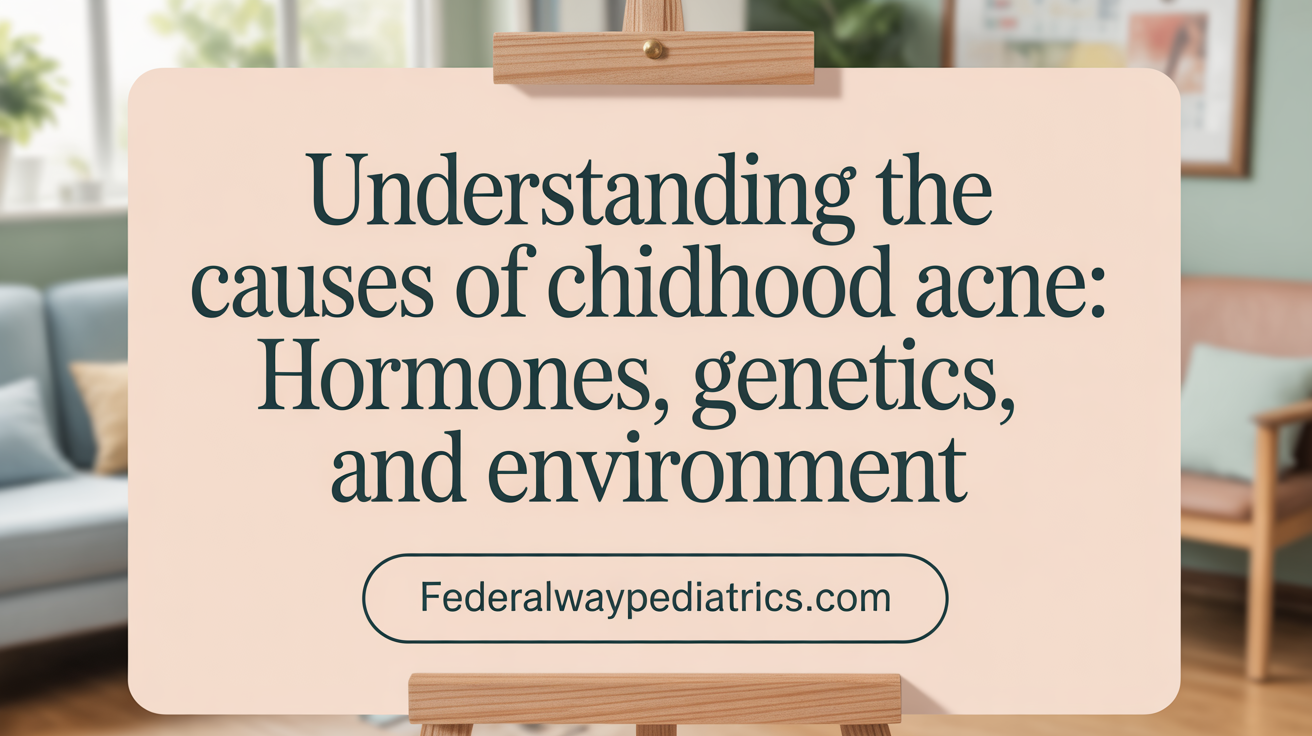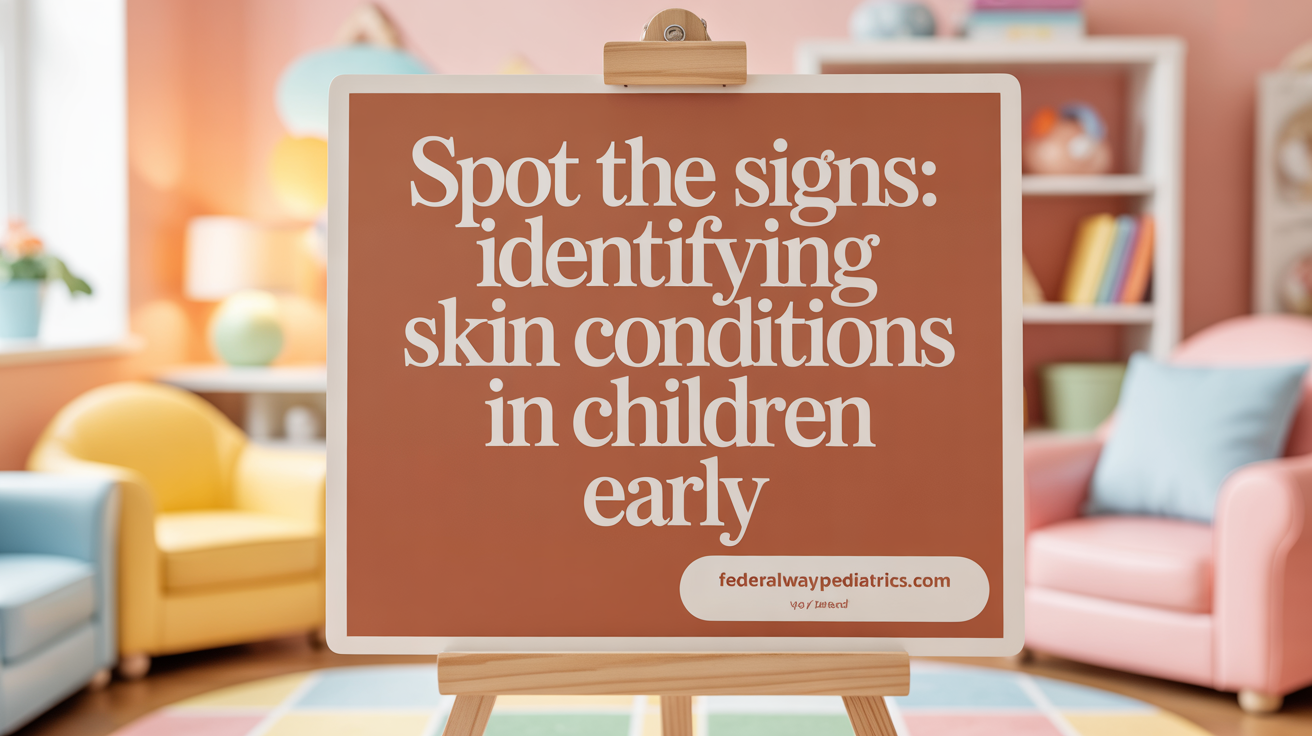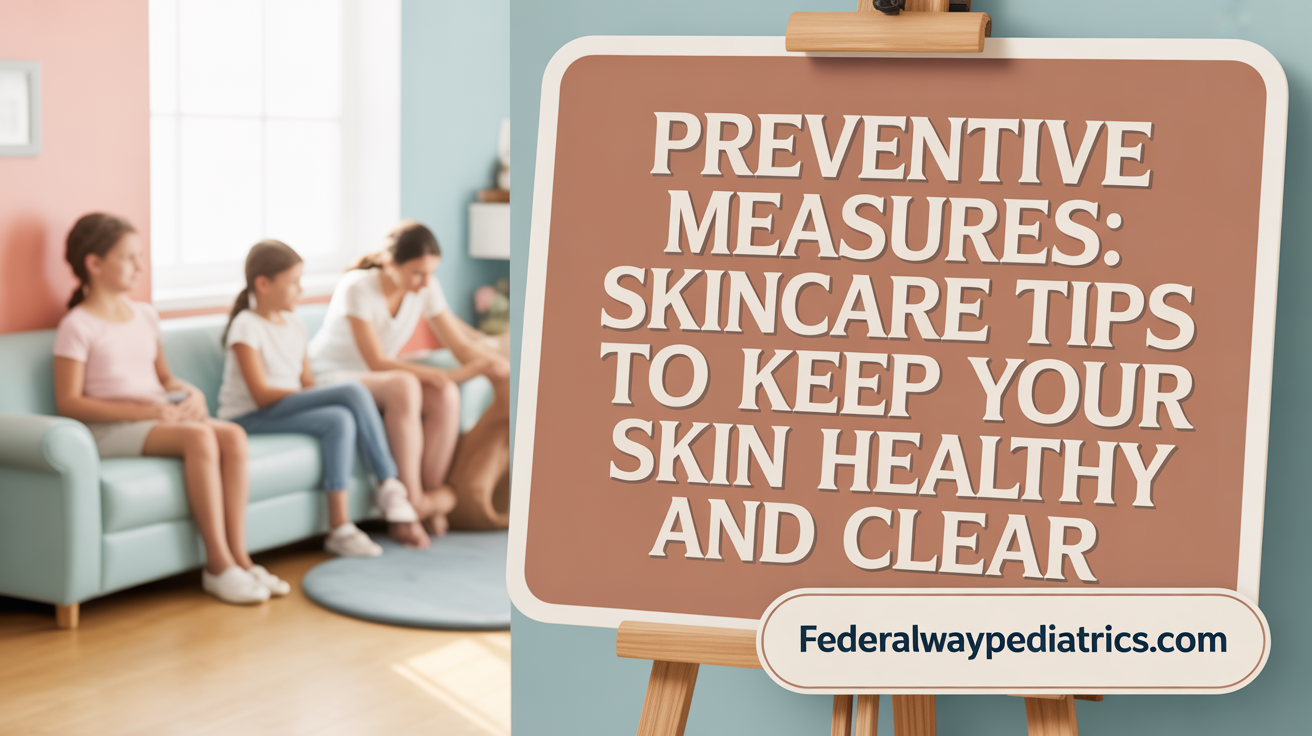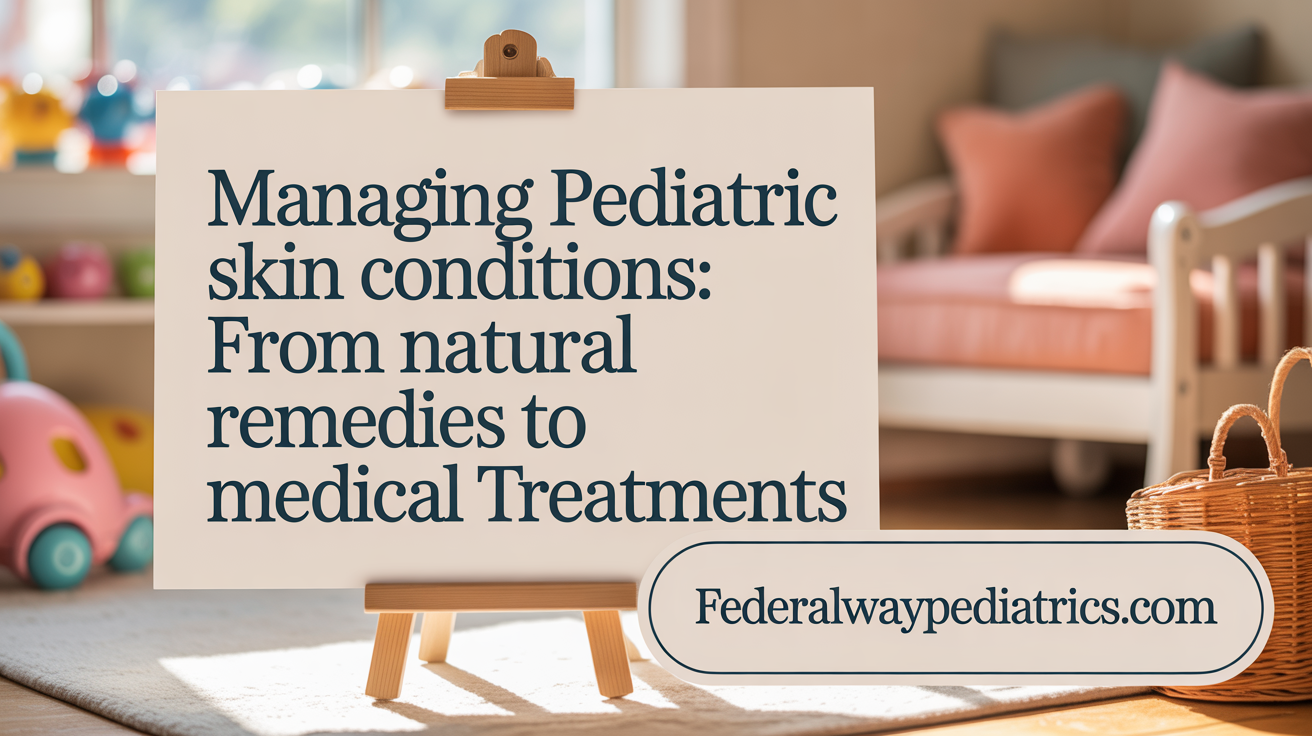Introduction to Childhood Acne
Acne is a common skin condition that affects children, particularly during the early stages of puberty but can also appear in younger children. Understanding its causes, symptoms, prevention strategies, and treatment options is essential for caregivers aiming to support healthy skin and emotional well-being in children. This article provides a detailed overview to help prevent and manage acne breakouts in young children effectively.
Causes and Development of Acne in Young Children

What causes acne in young children?
Acne in young children often originates from internal hormonal changes that lead to increased oil production in the skin. During puberty, the body produces higher levels of androgens, hormones that stimulate the sebaceous (oil) glands. Similar hormonal shifts can occur earlier in life, such as during neonatal stages due to maternal hormones crossing the placenta, or in preadolescents experiencing early adrenarche.
Genetics also significantly influence how prone a child is to developing acne. Children with a family history of acne are more likely to experience similar skin issues. In addition to hormonal factors, external contributors such as certain medications—like corticosteroids or lithium—can exacerbate or trigger acne.
Environmental factors also play a role. Pollution, excessive sweating, and the use of occlusive skin or hair care products can clog pores further, providing a fertile ground for bacterial growth.
Bacterial involvement, particularly by Propionibacterium acnes, is central to the development of acne. The bacteria colonize blocked hair follicles, causing inflammation, redness, and the formation of pimples. Overall, a combination of increased sebum production, follicular blockage, bacterial colonization, and inflammation underpins the development of acne in young children.
Recognizing Signs and Symptoms of Childhood Acne

What are the signs and symptoms of acne in children?
Recognizing acne in children involves observing various skin changes. Common signs include small, flesh-colored bumps like whiteheads and blackheads, which are caused by clogged pores. Red, inflamed pimples filled with pus can also appear, indicating bacterial infection and inflammation.
In more severe cases, children might develop large, solid bumps called nodules or painful cysts beneath the skin surface. These are often larger and more tender, requiring medical intervention.
Skin areas commonly affected
The most frequently affected areas are the face, especially the cheeks, nose, and forehead. But acne can also appear on the chest, upper back, shoulders, and neck. This wide distribution is due to the high concentration of sebaceous glands in these regions.
Severity spectrum from mild to cystic acne
Acne severity varies from mild, with occasional whiteheads and blackheads, to more serious forms characterized by numerous inflamed pimples and cysts. Mild acne often responds well to simple hygiene routines, whereas severe cystic acne may lead to scarring if left untreated.
Emotional impact and associated distress
Beyond physical symptoms, acne can significantly affect a child's emotional well-being. Children with prominent acne may experience anxiety, low self-esteem, and social withdrawal. Recognizing these signs early helps in managing both the skin condition and its emotional effects, underscoring the importance of timely treatment and support.
Effective Prevention Strategies for Acne in Children

How can acne be prevented in young children?
Preventing acne in young children involves establishing good skincare habits and minimizing factors that can clog pores. First, gentle daily cleansing is essential. Parents should wash their child's face twice each day using warm water and a mild, non-irritating soap or cleanser, avoiding scrubbing or harsh exfoliating tools that can irritate sensitive skin.
Keeping hair clean and away from the face is another important step. Oily hair products like gels and pomades should be avoided or applied carefully to prevent hair oils from transferring onto the skin, which can contribute to pore blockages.
Children should also be encouraged not to touch, squeeze, or pick at pimples. Doing so can worsen inflammation, cause infections, and increase the risk of permanent scarring. Using non-comedogenic skincare products and makeup—meaning those that won’t clog pores—is recommended for children who wear cosmetic products.
Good hygiene extends beyond facial care. Regularly washing pillowcases, bedsheets, and hats can reduce dirt, oils, and bacteria that might contribute to acne. Additionally, bathing after sweating from play or sports and keeping skin hydrated with oil-free moisturizers help maintain healthy skin.
Environmental factors such as sun exposure should also be considered. Applying a broad-spectrum, non-comedogenic sunscreen protects the skin and helps prevent post-inflammatory marks. Managing stress through relaxation techniques and ensuring a balanced diet low in processed sugar and saturated fats can support skin health.
Early, consistent use of treatments like topical benzoyl peroxide or adapalene under medical guidance helps prevent new breakouts. These measures collectively reduce the risk of developing persistent or severe acne, protecting children's skin from long-term damage and boosting their confidence.
Treatment Options for Pediatric Acne: From Over-the-Counter to Prescription

What treatment options are available for pediatric acne, including natural methods?
Managing acne in children involves a combination of good skincare practices, over-the-counter remedies, and, in some cases, medical intervention. For mild acne, daily gentle cleansing with warm water and a mild, non-comedogenic soap or cleanser can help control oil and bacteria.
Over-the-counter topical treatments containing benzoyl peroxide or salicylic acid are often effective for mild to moderate acne. These products help reduce bacteria, unclog pores, and decrease inflammation. It’s important to apply these medications to all affected areas consistently, as directed, and to avoid over-washing or scrubbing, which can irritate the skin.
When acne is more persistent or severe, a healthcare professional might recommend stronger topical therapies such as retinoids like adapalene or tretinoin. These help prevent dead skin cell buildup and promote skin renewal. Antibiotics may be prescribed to decrease bacteria and inflammation.
For cases that do not respond well to topical treatments, systemic medications might become necessary. Hormonal therapies, such as certain birth control pills or spironolactone, can be useful for hormonal acne, especially in post-pubertal children. In the most severe cases, such as cystic acne, isotretinoin (commonly known as Accutane) may be prescribed, but only under strict medical supervision due to potential side effects.
Some natural approaches can support treatment efforts and promote healthy skin. These include maintaining a balanced diet low in processed sugars and high in fruits, vegetables, and whole grains. Proper hydration and avoiding skin irritants or harsh products are also beneficial.
Supporting skin health through proper hygiene, avoiding squeezing or picking pimples, and protecting skin from excessive sun exposure are important preventive steps. Using natural remedies like honey, aloe vera, or herbal extracts may help soothe irritated skin, but these should be discussed with a healthcare provider first to ensure safety and efficacy.
Ultimately, early consultation with a healthcare professional, such as a pediatrician or dermatologist, is essential for developing a personalized treatment plan. This approach can help prevent scarring, improve skin condition, and support the child's emotional well-being.
Regular follow-ups are recommended to monitor progress and adjust treatments as needed. Effective management combines medical treatments when necessary with supportive skincare and lifestyle habits, ensuring a comprehensive approach to pediatric acne care.
More information can be found by searching the query: 'Pediatric acne treatment options and natural remedies'.
When to Seek Medical Advice for Childhood Acne
Acne in children often improves with proper skincare, but there are important signs that indicate a need for medical help.
Parents and caregivers should consider consulting a healthcare professional if the acne is moderate to severe, lasts longer than a few months, or causes significant discomfort. Persistent pimples, large cysts, or painful lumps that do not respond to home treatments warrant expert evaluation.
Signs of severe or infected acne include spreading redness, redness accompanied by swelling, warmth, pus, or signs of systemic infection like fever. If acne causes scarring or emotional distress, professional treatment becomes even more critical.
Over-the-counter remedies like benzoyl peroxide or salicylic acid are helpful initially, but if there's no improvement within one to two months, a doctor should be involved. Children displaying hormonal symptoms such as sudden weight gain, increased facial or body hair, or signs of early puberty should seek medical advice to investigate potential underlying hormonal imbalances.
Early intervention helps prevent permanent scarring, manage hormonal influences, and address any underlying health conditions. Prompt care can also reduce the psychological impact of acne and support overall well-being.
Overall, any persistent or worsening skin condition, or symptoms suggesting an underlying systemic issue, should prompt a visit to a healthcare professional for tailored treatment and advice.
Submit your query "When to see a doctor for childhood acne" to find detailed guidance and ensure proper management.
Educating Children and Caregivers About Acne Management
Understanding acne is crucial for children and their caregivers, as it helps promote effective management and reduces emotional stress. Educators should provide clear, age-appropriate explanations of what causes acne, such as hormonal changes during puberty, excess oil production, and clogged hair follicles. Emphasizing good skincare routines—like gentle washing with mild, non-comedogenic soap twice daily and washing hair regularly—can significantly help prevent breakouts.
It's important to set realistic expectations, explaining that most acne treatments, whether over-the-counter products like benzoyl peroxide or salicylic acid, or prescription medications, often require several weeks to months before improvement appears. Encouraging patience and consistency is key.
Caregivers should be advised to consult healthcare professionals for severe or persistent acne or for signs of infection, such as increased redness, swelling, or pus. Dispelling myths about acne being caused by dirt or poor hygiene helps reduce stigma. Instead, normalizing acne as a common, temporary part of adolescence can alleviate embarrassment.
Addressing the emotional impact of acne is equally important. Stress and negative self-image can worsen skin conditions. Promoting healthy stress management techniques and open communication about feelings encourages children to seek support when needed.
Overall, through proper education and support, children and their caregivers can confidently manage acne, supporting healthy skin and emotional well-being.
Summary and Support for Healthy Skin
Acne in young children, while common and often linked to hormonal changes and genetic factors, can be effectively managed and prevented through proper skin care, early intervention, and appropriate treatment. Understanding the causes and symptoms helps caregivers and children navigate this condition with confidence. Establishing gentle skincare routines, avoiding aggravating behaviors, and seeking medical advice when necessary are key steps to minimizing the impact of acne on children’s skin health and emotional well-being. With education and support, children can maintain healthier skin and greater self-esteem as they grow.
References
- Acne (for Kids) | Nemours KidsHealth
- Acne in Children | Children's Hospital of Philadelphia
- Acne in Children: Care Instructions - MyHealth Alberta
- How To Prevent And Treat Teen Acne - M Health Fairview
- Acne | CS Mott Children's Hospital | Michigan Medicine
- Understanding Acne in Teenagers and Kids: Causes, Treatment ...
- 12 Tips to Combat Acne - Rush University Medical Center
- Pediatric Acne Symptoms, Causes, Treatment
